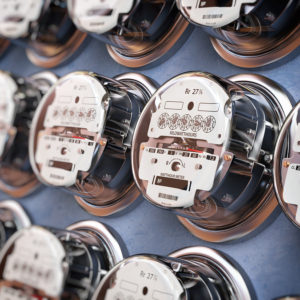More than 40 million Americans have filed for unemployment insurance since March and many of them could soon be without electricity in the hot summer months.
This is not merely an inconvenience. With electricity essential to all aspects of modern life, including refrigeration for medicines that many senior citizens need and power for medical devices, this is an issue of human safety and welfare.
Even before the pandemic hit, tens of millions of Americans were affected by high electricity bills. A September 2018 report from the U.S. Energy Information Administration found that 31 percent of U.S. households faced a challenge in paying energy bills or sustaining adequate heating in their homes. More than 20 percent reduced or went without necessities, such as food or medicine, to pay the electric bill.
There is some good news. At the beginning of the pandemic, many electric utilities voluntarily announced that they would refrain from shutting off power to those who could not pay. Several large states, including California and New York, have ordered that shutoffs not occur.
Some states have already lifted restrictions and others are poised to do so, according to the National Governors Association. Michigan, for example, appears likely to lift the shut-off moratorium on June 12.
The status quo cannot continue indefinitely. Utilities have seen their revenues decline as power usage and power prices have declined.
There is likely not room for an across-the-board steep price hike on those who are not facing shutoffs, but who are struggling financially. And governments are tapped out and not likely to want to directly assist power producers.
There are three steps that policymakers should take to reduce shutoffs and the resulting trauma that will occur.
First, extraneous charges on electric bills should be suspended and many eliminated entirely. It has become far too easy for politicians to impose hidden taxes on electricity bills to raise revenues. In particularly, the opaque costs to subsidize renewables should also be eliminated at least for the next six months.
America needs an “all of the above” approach when it comes to electricity sources. The push to close certain power plants should end to keep prices low for as long as possible.
Second, the federal government’s Low Income Home Energy Assistance Program should be dramatically expanded over the next 18 months. The program’s framework will ensure effective targeting of federal assistance, getting dollars to senior citizens and the poor rather than the scattershot approach recently seen with the Paycheck Protection Program.
Third, state utility commissions should encourage as much energy development as possible, both to produce and distribute power. The current glut of power has kept downward pressure on electricity prices and that needs to be kept in place permanently.
Consumers fearing a power cutoff should notify the utility sooner rather than later and seek to work out a payment plan. It is also helpful to look at conservation steps to reduce unnecessary electricity usage. In addition, consumers may wish to contact state utility commissions and urge that they keep rates low.
Abundant, low-cost electricity is essential for preserving our way of life and to help jump start economic recovery. We need to ensure that prices stay low in 2020 and beyond.
We can no longer see electricity bills as a “cash cow” to raise general revenues or to massively subsidize expensive and ill-conceived renewable energy projects.

